#Capuchin Franciscans
Text
New icon now listed in my online shop!

Click on the image to see the listing :)
Some details below:
$52.00 (shipping included!)
DIMENSIONS – Approximately 5” x 7.5” x 0.25”
DAMAGE-FREE HANGING – While not included, this wooden icon is flat on the backside which is perfect for hanging with Command Strips. No nails or hooks required!
ORIGINAL ILLUSTRATION – This is one of my illustrations of the St. Pio, more well known as “Padre Pio”. The original was a commissioned piece painted with black gouache. At the top of the icon are hand-painted gold letters that spell out “St. Pio” and surrounding his portrait are white daisies.
BEAUTIFULLY HANDMADE ICON – Each icon is crafted with wood, acrylic paint, and printed paper before being carefully sealed with a UV-protective glossy finish. Each icon is meant to have imperfections due to their unique, unfinished nature so brush strokes will be visible. On the back includes a sticker with my logo, “Cella Bella Illuminations” and my website.
#padre pio#st. pio#franciscan#capuchin friar#catholic art#capuchin saint#catholic saints#catholic artist#catholic gifts#catholic tumblr
7 notes
·
View notes
Text

Hymn for evening prayer
Feast of St Lawrence of Brindisi
#St Lawrence of Brindisi#Capuchin#cross#Jesus#Christ#Jesus Christ#saint#saints#Catholic#Catholicism#Christian#Christianity#Franciscan#friars#religious#religion#faith#hymn#Mother Mary#Mary#Our Lady#Holy Mass#Mass#St Francis#humility#sanctity#holiness
8 notes
·
View notes
Text
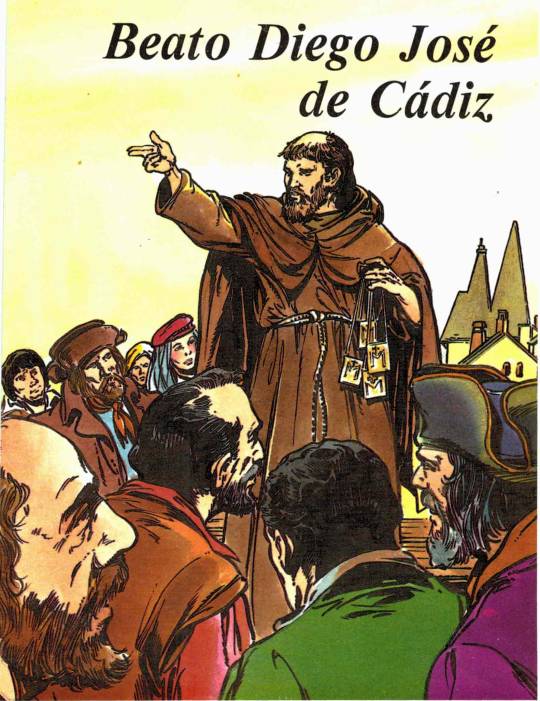
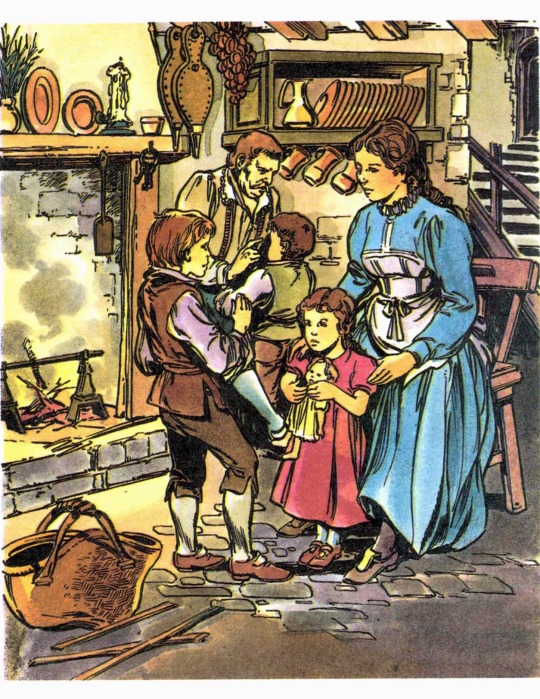

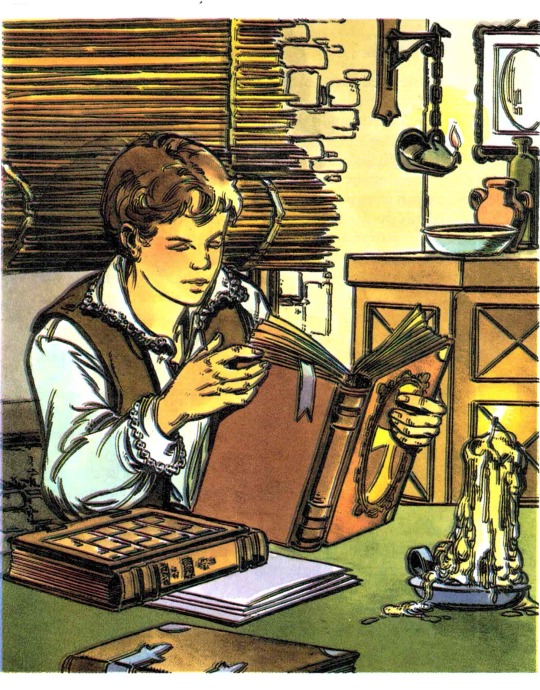
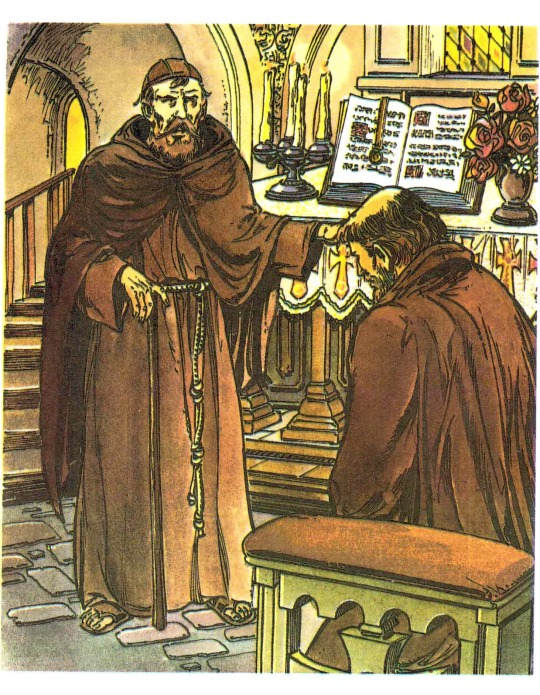
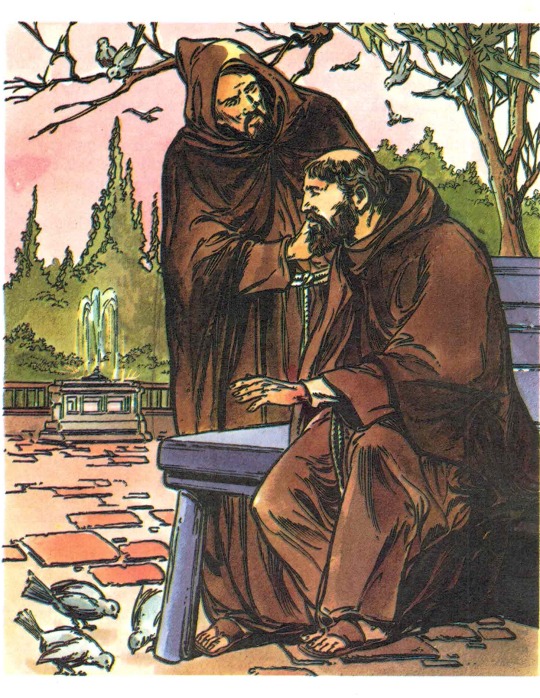
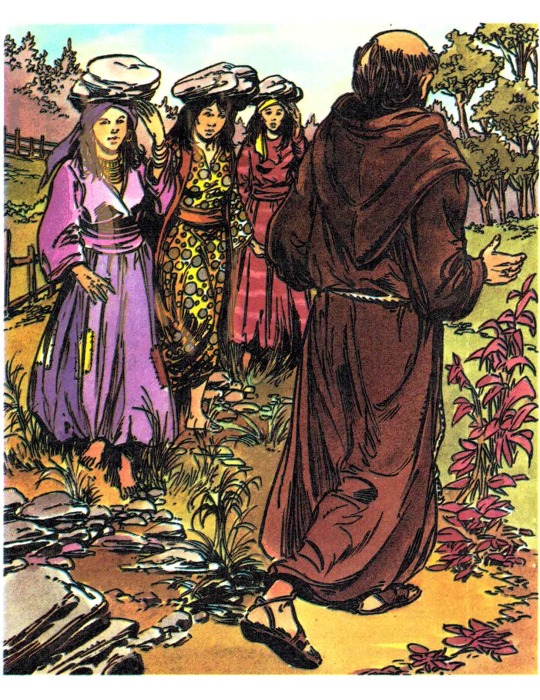
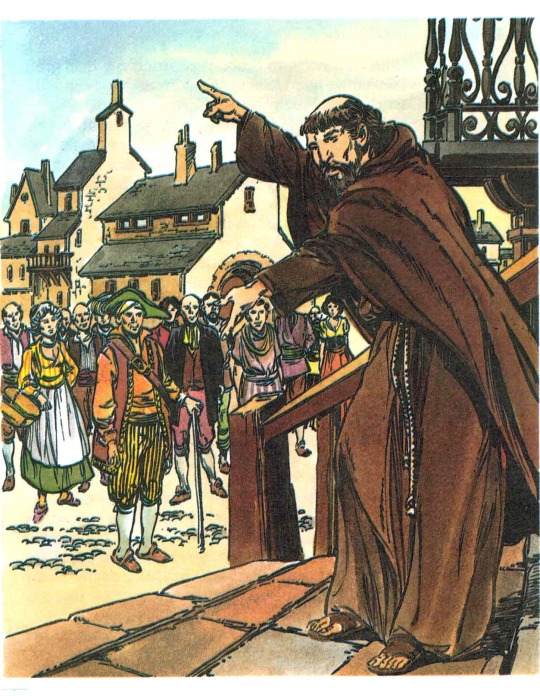

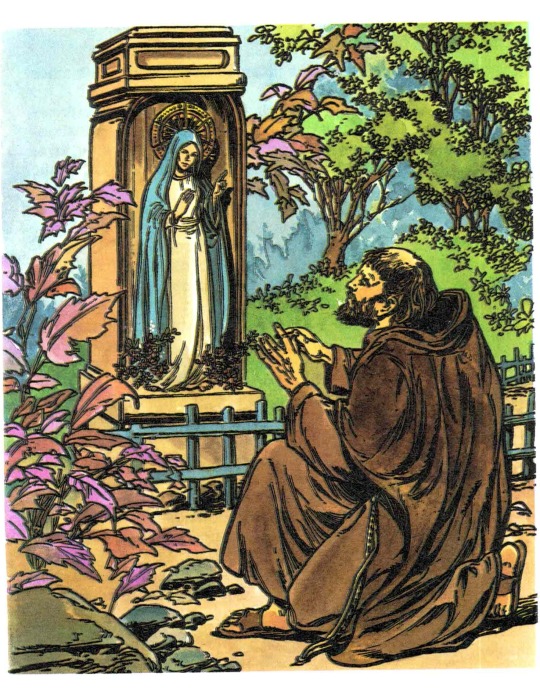
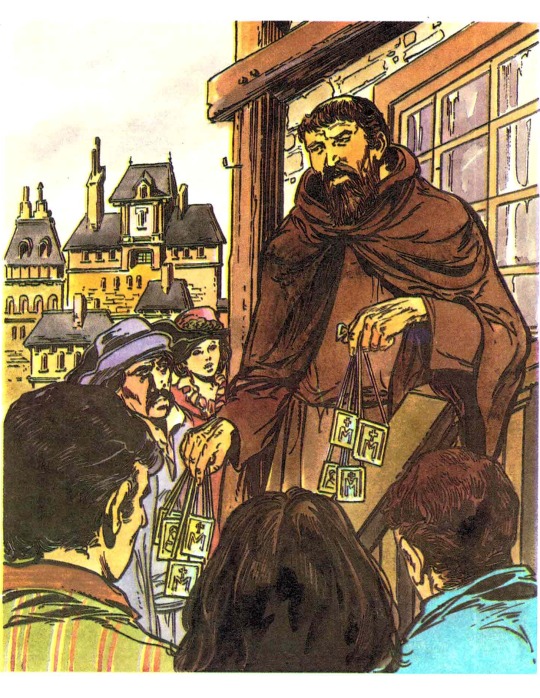

Blessed Diego José de Cádiz
Illustrator unknown
0 notes
Text

Saint Leopold Mandic
1866-1942
Feast Day: May 12
The Apostle of Unity and the Confessional
Saint Leopold Mandic was born with many physical and health problems, into a large family, in Croatia. In 1884, he joined the Capuchin Franciscans and was appointed to a parish in Padua from 1906 until his death. He was so committed to mercy and compassion, that he spent 13-16 hours a day in the confessional. People from all walks of life sought him out for this sacrament of reconciliation, including Albino Luciani who would become John Paul I. He also prayed and worked for the unity of the Roman and Orthodox Christians. He died of esophagus cancer after he collapsed as he was preparing for Mass.
Prints, plaques & holy cards available for purchase here: (website)
39 notes
·
View notes
Text
Today the Church remembers the 108 Blessed Polish Martyrs.
Orate pro nobis.
The 108 Blessed Polish Martyrs were Roman Catholic Christians in Poland killed during World War II by the Nazis, either in the concentration camps or by mass slaughter on the streets. The group comprises 3 bishops, 79 priests, 7 male religious, 8 female religious, and 11 lay people. There are two parishes named for the 108 Martyrs of World War II in Powiercie in Koło County, and in Malbork, Poland.
The 108 Blessed Martyrs were beatified on 13 June 1999 by Pope John Paul II in Warsaw, Poland.
List of Martyrs
Bishops
1. Antoni Julian Nowowiejski (1858–1941 KL Soldau), bishop
2. Leon Wetmański (1886–1941 KL Soldau), bishop
3. Władysław Goral (1898–1945 KL Sachsenhausen), bishop
Priests
1. Adam Bargielski, priest from Myszyniec (1903–1942 KZ Dachau)
2. Aleksy Sobaszek, priest (1895–1942 KL Dachau)
3. Alfons Maria Mazurek, Carmelite friar, prior, priest (1891–1944, shot by the Gestapo)
4. Alojzy Liguda, Society of the Divine Word, priest (1898–1942 KL Dachau)
5. Anastazy Jakub Pankiewicz, Franciscan friar, priest (1882–1942 KL Dachau)
6. Anicet Kopliński, Capuchin friar, priest in Warsaw (1875–1941)
7. Antoni Beszta-Borowski, priest, dean of Bielsk Podlaski (1880–1943, shot near Bielsk Podlaski)
8. Antoni Leszczewicz, Marian Father, priest (1890–1943, burnt to death in Rosica, Belarus)
9. Antoni Rewera, priest, dean of the Cathedral Chapter in Sandomierz (1869–1942 KL Dachau)
10. Antoni Świadek, priest from Bydgoszcz (1909–1945 KL Dachau)
11. Antoni Zawistowski, priest (1882–1942 KL Dachau)
12. Bolesław Strzelecki, priest (1896–1941 KL Auschwitz)
13. Bronisław Komorowski, priest (1889–22 March 1940 KL Stutthof)
14. Dominik Jędrzejewski, priest (1886–1942 KL Dachau)
15. Edward Detkens, priest (1885–1942 KL Dachau)
16. Edward Grzymała, priest (1906–1942 KL Dachau)
17. Emil Szramek, priest (1887–1942 KL Dachau)
18. Fidelis Chojnacki, Capuchin friar, priest (1906–1942, KL Dachau)
19. Florian Stępniak, Capuchin friar, priest (1912–1942 KL Dachau)
20. Franciszek Dachtera, priest (1910–23 August 1942 KL Dachau)
21. Franciszek Drzewiecki, Orionine Father, priest (1908–1942 KL Dachau); from Zduny, he was condemned to heavy work in the plantation of Dachau. While he was bending over tilling the soil, he adored the consecrated hosts kept in a small box in front of him. While he was going to the gas chamber, he encouraged his companions, saying "We offer our life for God, for the Church and for our Country".
22. Franciszek Rogaczewski, priest from Gdańsk (1892–1940, shot in Stutthof or in Piaśnica, Pomerania)
23. Franciszek Rosłaniec, priest (1889–1942 KL Dachau)
24. Henryk Hlebowicz, priest (1904–1941, shot at Borisov in Belarus)
25. Henryk Kaczorowski, priest from Włocławek (1888–1942)
26. Henryk Krzysztofik, religious priest (1908–1942 KL Dachau)
27. Hilary Paweł Januszewski, religious priest (1907–1945 KL Dachau)
28. Jan Antonin Bajewski, Conventual Franciscan friar, priest (1915–1941 KL Auschwitz); of Niepokalanow. These were the closest collaborators of St Maximilian Kolbe in the fight for God's cause and together suffered and helped each other spiritually in their offering their lives at Auschwitz
29. Jan Franciszek Czartoryski, Dominican friar, priest (1897–1944)
30. Jan Nepomucen Chrzan, priest (1885–1942 KL Dachau)
31. Jerzy Kaszyra, Marian Father, priest (1910–1943, burnt to death in Rosica, Belarus)
32. Józef Achilles Puchała, Franciscan friar, priest (1911–1943, killed near Iwieniec, Belarus)
33. Józef Cebula, Missionary Oblate, priest (23 March 1902 – 9 May 1941 KL Mauthausen)[
34. Józef Czempiel, priest (1883–1942 KL Mauthausen)
35. Józef Innocenty Guz, Franciscan friar, priest (1890–1940 KL Sachsenhausen)
36. Józef Jankowski, Pallotine, priest (1910 born in Czyczkowy near Brusy, Kashubia (died 16 October 1941 in KL Auschwitz beaten by a kapo)
37. Józef Kowalski, Salesian, priest (1911–1942) , priest beaten to death on 3 July 1942 in the KL Auschwitz concentration camp
38. Józef Kurzawa, priest (1910–1940)
39. Józef Kut, priest (1905–1942 KL Dachau)
40. Józef Pawłowski, priest (1890–9 January 1942 KL Dachau)
41. Józef Stanek, Pallottine, priest (1916–23 September 1944, murdered in Warsaw)
42. Józef Straszewski, priest (1885–1942 KL Dachau)
43. Karol Herman Stępień, Franciscan friar, priest (1910–1943, killed near Iwieniec, Belarus)
44. Kazimierz Gostyński, priest (1884–1942 KL Dachau)
45. Kazimierz Grelewski, priest (1907–1942 KL Dachau)
46. Kazimierz Sykulski, priest (1882–1942 KL Auschwitz)
47. Krystyn Gondek, Franciscan friar, priest (1909–1942 KL Dachau)
48. Leon Nowakowski, priest (1913–1939)
49. Ludwik Mzyk, Society of the Divine Word, priest (1905–1940)
50. Ludwik Pius Bartosik, Conventual Franciscan friar, priest (1909–1941 KL Auschwitz); of Niepokalanow. These were the closest collaborators of St Maximilian Kolbe in the fight for God's cause and together suffered and helped each other spiritually in their offering their lives at Auschwitz
51. Ludwik Roch Gietyngier, priest from Częstochowa (1904–1941 KL Dachau)
52. Maksymilian Binkiewicz, priest (1913–24 July 1942, beaten, died in KL Dachau)
53. Marian Gorecki, priest (1903–22 March 1940 KL Stutthof)
54. Marian Konopiński, Capuchin friar, priest (1907–1 January 1943 KL Dachau)
55. Marian Skrzypczak, priest (1909–1939 shot in Plonkowo)
56. Michał Oziębłowski, priest (1900–1942 KL Dachau)
57. Michał Piaszczyński, priest (1885–1940 KL Sachsenhausen)
58. Michał Woźniak, priest (1875–1942 KL Dachau)
59. Mieczysław Bohatkiewicz, priest (1904–4 March 1942, shot in Berezwecz)
60. Narcyz Putz, priest (1877–1942 KL Dachau)
61. Narcyz Turchan, priest (1879–1942 KL Dachau)
62. Piotr Edward Dankowski, priest (1908–3 April 1942 KL Auschwitz)
63. Roman Archutowski, priest (1882–1943 KL Majdanek)
64. Roman Sitko, priest (1880–1942 KL Auschwitz)
65. Stanisław Kubista, Society of the Divine Word, priest (1898–1940 KL Sachsenhausen)
66. Stanisław Kubski, priest (1876–1942, prisoner in KL Dachau, killed in Hartheim near Linz)
67. Stanisław Mysakowski, priest (1896–1942 KL Dachau)
68. Stanisław Pyrtek, priest (1913–4 March 1942, shot in Berezwecz)
69. Stefan Grelewski, priest (1899–1941 KL Dachau)
70. Wincenty Matuszewski, priest (1869–1940)
71. Władysław Błądziński, Michaelite, priest (1908–1944, KL Gross-Rosen)
72. Władysław Demski, priest (1884–28 May 1940, KL Sachsenhausen)
73. Władysław Maćkowiak, priest (1910–4 March 1942 shot in Berezwecz)
74. Władysław Mączkowski, priest (1911–20 August 1942 KL Dachau)
75. Władysław Miegoń, priest, commander lieutenant (1892–1942 KL Dachau)
76. Włodzimierz Laskowski, priest (1886–1940 KL Gusen)
77. Wojciech Nierychlewski, religious, priest (1903–1942, KL Auschwitz)
78. Zygmunt Pisarski, priest (1902–1943)
79. Zygmunt Sajna, priest (1897–1940, shot at Palmiry, near Warsaw)
Religious brothers
1. Brunon Zembol, friar (1905–1942 KL Dachau)
2. Grzegorz Bolesław Frąckowiak, Society of the Divine Word friar (1911–1943, guillotined in Dresden)
3. Józef Zapłata, friar (1904–1945 KL Dachau)
4. Marcin Oprządek, friar (1884–1942 KL Dachau)
5. Piotr Bonifacy Żukowski, friar (1913–1942 KL Auschwitz)
6. Stanisław Tymoteusz Trojanowski, friar (1908–1942 KL Auschwitz)
7. Symforian Ducki, friar (1888–1942 KL Auschwitz)
Nuns and religious sisters
1. Alicja Maria Jadwiga Kotowska, sister, based on eye-witness reports comforted and huddled with Jewish children before she and the children were executed (1899–1939, executed at Piaśnica, Pomerania)
2. Ewa Noiszewska, sister (1885–1942, executed at Góra Pietrelewicka near Slonim, Belarus)
3. Julia Rodzińska, Dominican sister (1899–20 February 1945, KL Stutthof); she died having contracted typhoid serving the Jewish women prisoners in a hut for which she had volunteered.
4. Katarzyna Celestyna Faron (1913–1944, KL Auschwitz); (1913–1944), had offered her life for the conversion of an Old Catholic bishop Władysław Faron (no relation). She was arrested by the Gestapo and condemned to Auschwitz camp. She put up heroically with all the abuses of the camp and died on Easter Sunday 1944. The bishop later returned to the Catholic Church).
5. Maria Antonina Kratochwil, SSND nun (1881–1942) died as a result of the torture she endured while imprisoned in Stanisławów.
6. Maria Klemensa Staszewska (1890–1943 KL Auschwitz)
7. Marta Wołowska (1879–1942, executed at Góra Pietrelewicka near Slonim, Belarus)
8. Mieczysława Kowalska, sister (1902–1941, Soldau concentration camp in Działdowo)
Roman Catholic laity
1. Bronisław Kostkowski, alumnus (1915–1942 KL Dachau)
2. Czesław Jóźwiak (1919–1942, guillotined in a prison in Dresden)
3. Edward Kaźmierski (1919–1942, guillotined in a prison in Dresden)
4. Edward Klinik (1919–1942, guillotined in a prison in Dresden)
5. Franciszek Kęsy (1920–1942, guillotined in a prison in Dresden)
6. Franciszek Stryjas (1882–31 July 1944, Kalisz prison)
7. Jarogniew Wojciechowski (1922–1942, guillotined in a prison in Dresden)
8. Marianna Biernacka (1888–13 July 1943), executed instead of her pregnant daughter-in-law Anna, offered her life for her and her unborn grandchild)
9. Natalia Tułasiewicz (1906–31 March 1945, died in KL Ravensbrück)
10. Stanisław Starowieyski (1895–1941 in KL Dachau)
11. Tadeusz Dulny, alumnus (1914–1942 KL Dachau)
Almighty God, by whose grace and power your Holy Martyrs of Poland triumphed over suffering and were faithful even to death: Grant us, who now remember them in thanksgiving, to be so faithful in our witness to you in this world, that we may receive with them the crown of life; through Jesus Christ our Lord, who lives and reigns with you and the Holy Spirit, one God, forever and ever. Amen.
(Fr. Józef Kowalski, priest beaten to death on 3 July 1942 in the KL Auschwitz concentration camp)
(Sr. Alicja Jadwiga Kotowska, a nun killed protecting a group of Jewish children in 1939 in the mass murders in Piaśnica)

#father troy beecham#christianity#jesus#saints#god#salvation#peace#martyrs#faith#christian persecution
39 notes
·
View notes
Text
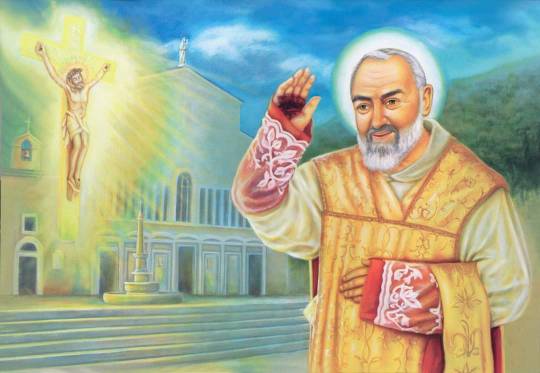
THE DESCRIPTION OF SAINT PIO OF PIETRELCINA (Padre Pio)
Feast Day: September 23
"Pray, hope, and don't worry."
Pio of Pietrelcina was born Francesco Forgione to Grazio Mario Forgione and Maria Giuseppa Di Nunzio, both were peasant farmers in Pietrelcina, a town in the province of Benevento, in the southern region of Campania, Italy on May 25th, 1887. He had an older brother, Michele, and three younger sisters, Felicita, Pellegrina, and Grazia (who was later to become a Bridgettine nun).
At a young age, he made the decision to dedicate his life to God, and began a life of penance. One day after listening to a Capuchin friar, who was seeking donations in the countryside, he determined to become a religious priest.
In 1903, he entered the Order of Friars Minor Capuchin, and took the name of Pio. After his ordination seven years later in 1910, he was assigned to the mountain convent of San Giovanni Rotondo, near Foggia, where he remained his whole life. Pio was endowed with exceptional spiritual gifts, such as reading the soul of his penitents, bilocation, experiencing heavenly visions and ecstasies. On the other hand, he was constantly afflicted with physical illness. He believed that the love of God is inseparable from suffering, and that suffering for the sake of God is the sure way to reach him. Pio was often obsessed by the devil, who terrified him with horrible screams and loud noises, or by burning and destroying the furniture of his room, or by brutally beating his body.
In 1910, Padre Pio received the stigmata of Our Lord: red marks appeared in his chest, hands and feet, accompanied by acute pain. At times, he also experienced the pain of the crowning with thorns and of the scourging.
Padre Pio died on September 23, 1968 in San Giovanni Rotondo at the age of 81, after making his last confession and renewing his Franciscan vows, while holding a rosary in his hands. Millions of pilgrims visited San Giovanni Rotondo during his lifetime, and many more afterwards. Pio was beatified by Pope St. John Paul II on May 2nd, 1999, and canonized as a saint by the same pope on June 16th, 2002 at the Vatican.
As Padre Pio had said: "After my death I will do more. My real mission will begin after my death."
10 notes
·
View notes
Text
SAINT OF THE DAY (July 21)

St. Lawrence of Brindisi, whose feast we celebrate on July 21, is a Doctor of the Church.
He was born Caesar de Rossi on 22 July 1559 in Naples. As a boy, he studied with the Conventual Franciscans and later went to study in Venice.
There, he discerned a call to enter the Capuchin Franciscans and took the name Lawrence.
Fluent in Hebrew and expertly versed in the Bible, he worked as a diplomat for the secular powers in Europe and as a missionary.
In 1596, he was commissioned by the Pope to work for the conversion of the Jewish people and to combat the spread of Protestantism.
He was a great preacher and refused a second term as minister general of his order in favor of preaching.
He died on 22 July 1619.
He was beatified by Pope Pius VI on 1 June 1783 and was canonized by Pope Leo XIII on 8 December 1881.
In 1959, Pope John XXIII declared him Doctor of the Church with the title "Apostolic Doctor."
10 notes
·
View notes
Text
On the 23th of September is the feast day of St. Pio of Pietrelcina, priest
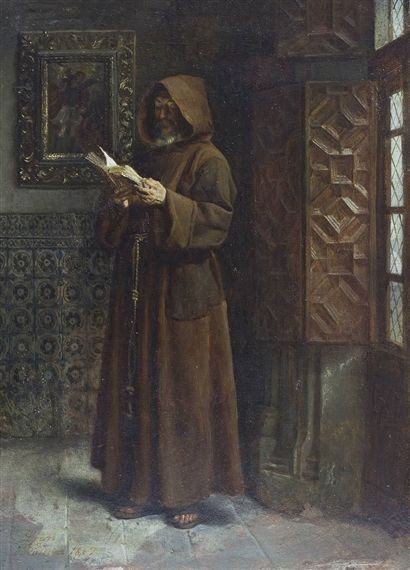
Ignacio de Leon y Escosura: Franciscan Monk Reading
Life of St. Pio of Pietrelcina
In one of the largest such ceremonies in history, Pope John Paul II canonized Padre Pio of Pietrelcina on June 16, 2002. It was the 45th canonization ceremony in Pope John Paul’s pontificate. More than 300,000 people braved blistering heat as they filled St. Peter’s Square and nearby streets. They heard the Holy Father praise the new saint for his prayer and charity. “This is the most concrete synthesis of Padre Pio’s teaching,” said the pope. He also stressed Padre Pio’s witness to the power of suffering. If accepted with love, the Holy Father stressed, such suffering can lead to “a privileged path of sanctity.”
Many people have turned to the Italian Capuchin Franciscan to intercede with God on their behalf; among them was the future Pope John Paul II. In 1962, when he was still an archbishop in Poland, he wrote to Padre Pio and asked him to pray for a Polish woman with throat cancer. Within two weeks, she had been cured of her life-threatening disease.
Born Francesco Forgione, Padre Pio grew up in a family of farmers in southern Italy. Twice his father worked in Jamaica, New York, to provide the family income.
At the age of 15, Francesco joined the Capuchins and took the name of Pio. He was ordained in 1910 and was drafted during World War I. After he was discovered to have tuberculosis, he was discharged. In 1917, he was assigned to the friary in San Giovanni Rotondo, 75 miles from the city of Bari on the Adriatic.
On September 20, 1918, as he was making his thanksgiving after Mass, Padre Pio had a vision of Jesus. When the vision ended, he had the stigmata in his hands, feet, and side.
Life became more complicated after that. Medical doctors, Church authorities, and curiosity seekers came to see Padre Pio. In 1924, and again in 1931, the authenticity of the stigmata was questioned; Padre Pio was not permitted to celebrate Mass publicly or to hear confessions. He did not complain of these decisions, which were soon reversed. However, he wrote no letters after 1924. His only other writing, a pamphlet on the agony of Jesus, was done before 1924.

Source of picture: https://nationalgeographicscans.tumblr.com
Padre Pio rarely left the friary after he received the stigmata, but busloads of people soon began coming to see him. Each morning after a 5 a.m. Mass in a crowded church, he heard confessions until noon. He took a mid-morning break to bless the sick and all who came to see him. Every afternoon he also heard confessions. In time his confessional ministry would take 10 hours a day; penitents had to take a number so that the situation could be handled. Many of them have said that Padre Pio knew details of their lives that they had never mentioned.
Padre Pio saw Jesus in all the sick and suffering. At his urging, a fine hospital was built on nearby Mount Gargano. The idea arose in 1940; a committee began to collect money. Ground was broken in 1946. Building the hospital was a technical wonder because of the difficulty of getting water there and of hauling up the building supplies. This “House for the Alleviation of Suffering” has 350 beds.
A number of people have reported cures they believe were received through the intercession of Padre Pio. Those who assisted at his Masses came away edified; several curiosity seekers were deeply moved. Like Saint Francis, Padre Pio sometimes had his habit torn or cut by souvenir hunters.
One of Padre Pio’s sufferings was that unscrupulous people several times circulated prophecies that they claimed originated from him. He never made prophecies about world events and never gave an opinion on matters that he felt belonged to Church authorities to decide. He died on September 23, 1968, and was beatified in 1999.
Source: https://www.franciscanmedia.org/saint-of-the-day/saint-pio-of-pietrelcina
#saints#St. Pio of Pietrelcina#priest#This is the most concrete synthesis of Padre Pio’s teaching#a privileged path of sanctity#House for the Alleviation of Suffering#The Gospel image of ‘yoke’ evokes the many trials that the humble Capuchin of San Giovanni Rotondo endured.#Today we contemplate in him how sweet is the ‘yoke’ of Christ and indeed how light the burdens are whenever someone carries these with faith#yoke#God#Jesus#Christ#Jesus Christ#Father#Son#Holy Spirit#Holy Trinity#christian religion#faith#hope#love#stress reliever
14 notes
·
View notes
Text

From the same region and religious order as Padre Pio, Fr. Matteo d’Agnone still has devotees today.
Born on November 30, 1563, he was baptized with the name Prospero Lolli. When he was still an adolescent, he was involved in an incident in which a companion was shot and killed with his father’s antique firearm. After fleeing to Naples, he attended the storied university to study philosophy and medicine.
There, he decided to become a Franciscan priest. He chose the Capuchin Order, a reform movement conceived some 30 years earlier as a penitential and hermitical order. His religious name given was Matteo (Matthew), which means “gift of God.”
He was ordained a priest in Bologna on September 20, 1587. Just before ordination, his extraordinary charism of exorcism and liberation was revealed.
While the other priests were carrying out an exorcism, the demon revealed that he could not bear the humility of Fra Matteo d’Agnone. In fact, as soon as the priest approached the woman, she was freed.
After ordination, he was transferred to the Capuchin province of Foggia, where he served as local and provincial minister. He became well-known as a virtuous and learned teacher and powerful preacher.
He distinguished himself for his devotion to Our Lady, and his staunch support of the Assumption of Mary four centuries before the dogma was proclaimed by Pope Pius XII in 1950.
Throughout his life, he suffered from numerous physical pains and maladies, for which he thanked the Lord, offering them up for the salvation of souls.
He died in the convent of Serracapriola, near Foggia, on October 31, 1616, and is interred there.
Many pilgrims to his tomb in Foggia (30 kilometers/20 miles from San Giovanni Rotondo) have reported receiving graces and even miracles.
Remarkably, those suffering from demonic obsession or possession have reported healings by praying for his intercession.
#Matteo d'agnone#Father matteo da Agnone#follow me#god#jesuschrist#i need followers#faith#roman catholic#catholicism#god loves you#amen#faithful#31 october#catholic church#iglesia católica#Igreja Católica#Mother of God#mary mother of jesus
3 notes
·
View notes
Text
Filling up what is lacking
Today is the Feast Day of Saint Fidelis of Sigmaringen, a Capuchin Franciscan friar, who was martyred during the Catholic Counter Reformation in 1622 (some 100 years after the start of the Protestant Reformation). Fidelis had been evangelizing in Graubünden, now a canton of eastern Switzerland, which at the time was a stronghold of Calvinism. He was meeting with a great deal of success in…
View On WordPress
0 notes
Text
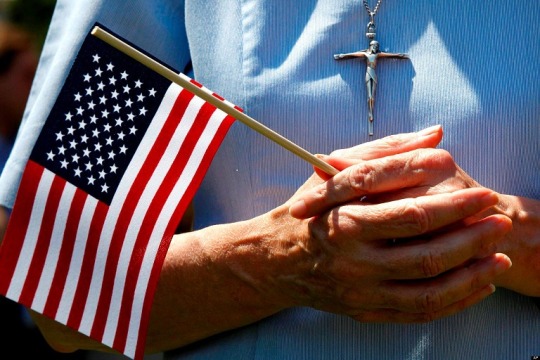
SAINTS OF THE DAY FOR APRIL 24
St. Mellitus of Canterbury, 624 A.D. Archbishop of Canterbury from 619. In 601, he was sent from St. Andrew’s Monastery, Rome, to England by Pope St. Gregory I the Great. Mellitus spent three years as a missionary in Kent, England, aiding St. Augustine. He also became the first bishop of London and was responsible for converting the King of the East Saxons. The Saxons, however, exiled him in 616 over some conflict, but Mellitus returned to England and was named archbishop of Canterbury, in succession to St. Lawrence. Tradition states that he saved Canterbury from a disastrous fire with his prayers.
St. Fidelis of Sigmaringen, Roman Catholic Franciscan Capuchin Martyr. A practicing lawyer, he traveled across Europe as a tutor to aristocrats but then started defending the poor. In 1612, he became a Franciscan Capuchin monk, taking the name of Fidelis. A missionary to Grisons, Switzerland, Fidelis was so successful that local Protestants claimed that he was a spy for the Austrian Emperor. Fidelis was stabbed to death. Feastday April 24
St. Egbert. Egbert IS A 8th. Century an English monk of Lindisfarne, he was anxious to go on the mission to Germany. His destiny, however, was less heroic but quite important. Settling on Iona, he succeeded in persuading the monks to adopt the roman usage over the celebration of Easter - a task which took thirteen years of gentle persuasion.
St. Diarmaid, 851 A.D. Irish bishop of Armagh known for his learning. He was named bishop in 834 but was driven from his see by a usurper, Forau. Diarmaid went to Connacht, where he ruled as primate. During his reign, Norsemen destroyed churches in Armagh in 841.
St. Dyfnan. Founder at Anglesey, Wales. He was the son of the Welsh chieftain Brychan of Brecknock.
St. Mary Clopas, Roman Catholic Mother of St. James the Less and Joseph, wife of Cleophas. She was one of the “Three Marys” who served Jesus and was present at the Crucifixion , and accompanied Mary Magdalen to the tomb of Christ. Tradition reports that she went to Spain as a missionary.Feastday April 24
ST. MARY ELIZABETH HESSELBLAD, FOUNDRESS OF THE BRIDGETTINES
The Servant of God was born in the little village of Faglavik, in the province of Alvsborg, on the 4 June 1870, the fifth of thirteen children born to Augusto Roberto Hesselblad and Cajsa Pettesdotter Dag. The following month she was baptized and received into the Reformed Church of Sweden.
April 24
0 notes
Link
from confirmation to aspiring deacon Shia LaBeouf has had his fair share ... https://dev-usalivenews.pantheonsite.io/from-confirmation-to-aspiring-deacon/?feed_id=31711&_unique_id=6597cfc3820d0 #movie film movies
0 notes
Text
International Cappuccino Day on November 8th whips up a frothy, hot cup of cappuccino. It's a perfect drink on a frosty morning, meeting with friends or just to enjoy a creamy cuppa.
# Cappuccino Day
Traditionally prepared with espresso, hot milk, and steamed milk foam, a cappuccino is an Italian coffee drink.
The word cappuccino comes from the Capuchin friars and is the diminutive form of cappuccio in Italian, meaning hood or something that covers the head. This popular coffee beverage got its name not from the hood on their habits but from the color of the hooded robes that the friars wore. (The Capuchin friars is an Order of friars in the Catholic Church, among the chief offshoots of the Franciscans.)
| In 1945, Achille Gaggia invented the modern espresso machine which further popularized the cappuccino.
• Mid-1990s – Cappuccino was made more widely available to North Americans as upscale coffee houses sprang up.
• Late 1990s to Early 2000s – Cappuccinos became popular in the United States concurrent with the boom in the American coffee industry.
• The start of the 21st Century – A modified short-cut version of the cappuccino started being served at fast-food chains.
While steaming the milk you must pay close attention to attain the correct ratio of foam, thus making the cappuccino one of the most difficult espresso-based beverages to make properly.
A skilled barista may create artistic shapes while he/she is pouring milk on top of the espresso coffee.
HOW TO OBSERVE CAPPUCCINO DAY
Visit your favorite coffee shop to enjoy a nice hot and delicious cup of cappuccino. While you're there, give them a shout-out using # Cappuccino Day to post on social media. Read up on your coffee history while enjoying a delicious cup.
©INTERNATIONAL CAPPUCCINO DAY HISTORY
International Day Calendar® continues researching the origins of this delicious coffee beverage.
Cappuccino FAQ
Q. Do cappuccinos come in different flavors?
A. Yes. Cappuccinos are often flavored using syrups. Some popular flavors include French vanilla, chocolate, salted caramel, pumpkin spice, peppermint, hazelnut, cinnamon, and Irish Cream.🥤☕
instagram
0 notes
Text
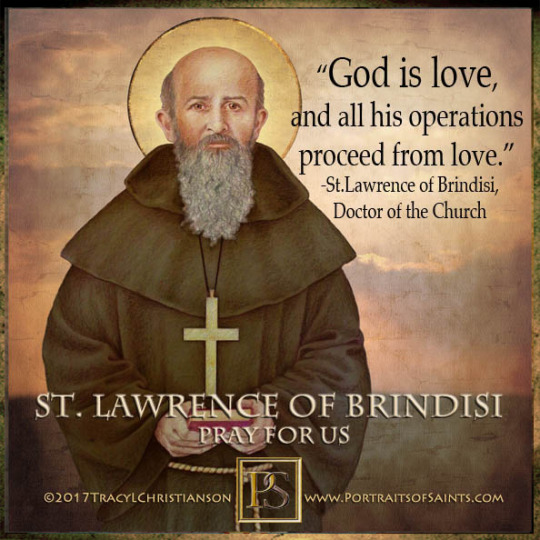
Saint Lawrence of Brindisi
Doctor of the Church
1559-1619
Feast Day: July 21
Patronage: Brindisi, Italy
Saint Lawrence of Brindisi was raised and educated in Italy by the Franciscans. At 16, he entered the Capuchin order, continuing his extensive studies in theology, philosophy, and languages. Talented as a linguist in over six languages, and an orator with a great memory, he was sent all over Europe serving as a peacemaker, chaplain, teacher, evangelist, and writer. He founded convents and monasteries to help serve the Church in troubled times. In 1959, St. Lawrence was declared a Doctor of the Church.
Prints, plaques & holy cards available for purchase here: (website)
51 notes
·
View notes
Text
Today, the Church remembers the Martyrs of New Guinea and the September Martyrs Of France.
Orate pro nobis.
The September Martyrs are a group of 191 faithful Christians who were martyred at the hands of the French Revolution on September 2 and 3, 1792.
After refusing to take an oath in support of the civil consititution of the clergy, an act condemned by the Vatican which placed Catholic priests under the authority and control of the state, these priests and religious brothers and sisters were imprisoned in a Carmelite convent and then massacred in the space of two days by bloodthirsty revolutionary mobs.
Between August 11 to 30 of 1792, more than 250 priests were imprisoned in various prisons of Paris – some in Carmel, others in La Force, others in Saint Firmin.
Among the prisoners were three Prelates, the superior general of the Marists, the superior of the Eudists, the general secretary of the Christian Brothers, parish priests, Benedictines, Jesuits, Franciscans, Capuchins, Sulpicians and others. God wanted all the classes of secular and regular clergy to be represented on the coming day of supreme testimony.
New Guinea (also called Irian), one of the world's largest islands, has a difficult terrain that discourages travel between districts, Consequently, it is home to many isolated tribes, with many different cultures and at least 500 languages. Christian missionaries began work there in the 1860's, but proceeded slowly.
When World War II threatened Papua and New Guinea, it was obvious that missionaries of European origin were in danger. There was talk of leaving. Bishop Philip Strong wrote to his clergy: "We must endeavour to carry on our work. God expects this of us. The church at home, which sent us out, will surely expect it of us. The universal church expects it of us. The people whom we serve expect it of us. We could never hold up our faces again if, for our own safety, we all forsook Him and fled, when the shadows of the Passion began to gather around Him in His spiritual and mystical body, the Church in Papua."
They stayed. Almost immediately there were arrests. Eight clergymen and two laymen were executed "as an example" on September 2, 1942. In the next few years, many Papuan Christians of all Churches risked their own lives to care for the wounded.
Almighty God, we remember before you this day the blessed martyrs of France and New Guinea, who, following the example of their Savior, laid down their lives for their friends; and we pray that we who honor their memory may imitate their loyalty and faith; through Jesus Christ our Lord, who lives and reigns with you and the Holy Spirit, one God, for ever and ever.
Amen.
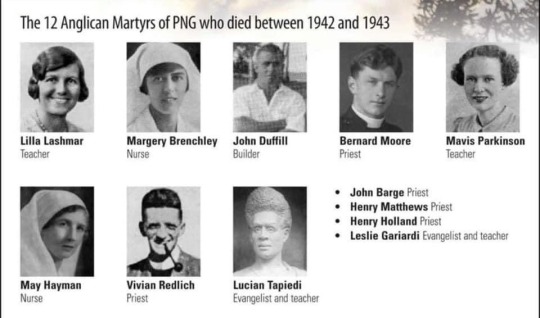

3 notes
·
View notes
Text
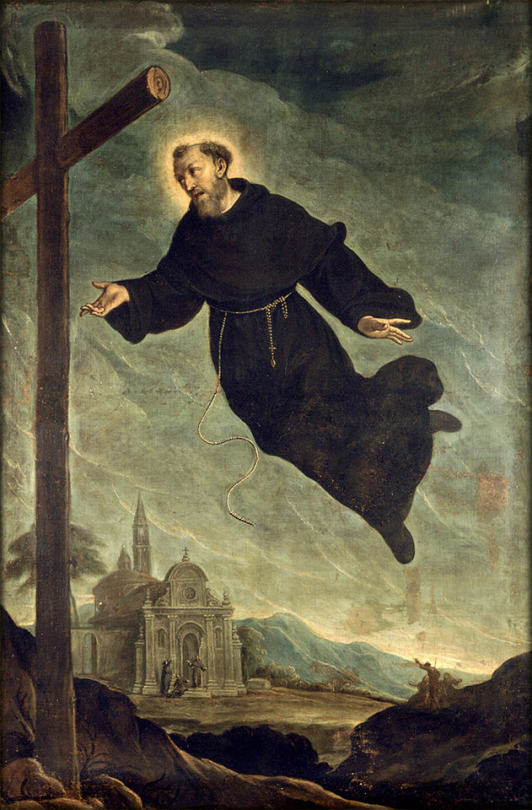
THE DESCRIPTION OF SAINT JOSEPH OF CUPERTINO
The Patron Saint of Aviators and Test Takers
Feast Day: September 18
Joseph of Cupertino was a Conventual Franciscan Friar (OFM Conv.) and is recognized and honored as a Christian mystic and saint. He is the patron saint of aviation, astronauts, mental handicaps, test taking, and students.
Joseph was born in the village of Cupertino in Italy in 1603 in a none-too-auspicious beginning. Ill fortune seemed to have set its seal on Joseph before he was born. His father, a carpenter by trade, was a good enough man in his way, but he was a poor hand at dealing with money; what little he earned seemed to slip at once through his fingers. At the very moment when his son came into the world his house was in the hands of bailiffs, and his effects were being sold up. Joseph was born in a shed at the back of the house, where his mother had hid herself out of shame. With such a beginning Joseph had very poor prospects.
By all descriptions Joseph was not a good student. He was described by his early teachers as easily being the dullest child in the village. He was absent-minded, awkward, and nervous; a sudden noise, such as the ringing of a church bell, would make him drop whatever he had in his hands. If ever a child began life with nothing in his favor it was Joseph; he had only one hopeful and saving quality—that he knew it.
The family, beset by its own problems, sought any means by which to give Joseph a trade. He was apprenticed to several tradesmen. His year as a shoemaker’s apprentice ended and he had not learned to make even simple repairs. Each trade endeavor ended with Joseph being dismissed. He was easily distracted, not always of good disposition, and was given to wandering off.
When he was 17, a Franciscan friar came into the village begging. His parents thought that if Joseph could not be a student or learn a trade, at least he could be a friar. His parents approached family members who were already Franciscans, but their local houses were unwilling to entertain the idea of Joseph sharing their life. After knocking on many friary doors, Joseph was accepted by the OFM Capuchins.
The brothers found that Joseph was a true test of their patience. Not only was he very dull and difficult to teach, but his fits of piety and abstraction were troublesome. He had a way of suddenly standing still in the midst of some task and forgetting everything. He would go down on his knees in the most unlikely places, utterly oblivious of everything around him. On one occasion, while carrying food into the dining hall, he suddenly dropped everything in a great crash. In the hope of curing him, bits of the broken plates were fastened to his habit, and he carried them about, as a penance, and as a reminder of his task of service. His stay with the Capuchins ended, as had all his apprenticeships.
His mother was not at all pleased to have the 18-yr. old Joseph back home again, so she finally got him accepted as a simple servant at the Franciscan monastery. His primary task was working in the stables and taking care of the horses. Slowly, Joseph began to change. He grew more humble and gentle, more careful and successful at his work. He also began to practice penance. After several years of work he had impressed the local friars with his simplicity, lightheartedness, and devotions, and was admitted to the Franciscan Order, eventually being ordained a priest.
You may wonder how someone who was seemingly ungifted intellectually would be able to study and pass his tests in seminary, passing courses in philosophy, theology, liturgy, scripture, and more. Perhaps there is a clue contained in the traditional prayer:
'O Saint Joseph of Cupertino, who by your prayer,
obtained from God the blessing to be asked at your examination only the questions you knew:
Grant that we may, like you, succeed in the exams.'
Joseph had experienced ecstatic visions as a child. What later came to be understood as a wonderful gift of seeing God and the supernatural in all things was seen first as an oddity and burden. Now when he was a friar, and a priest besides, the visions grew stronger; it seemed easier for him to see God indwelling in His creation. Joseph could spend whole days lost in wonder and ecstatic prayer.
One might also wonder how this 17th-century saint became the patron of aviation and astronauts. In the midst of some of his ecstatic moments, Joseph would rise from the ground, and move about in the air. Within a church or friary chapel he was seen to fly towards the altar or over it. The moments were not limited to church, but occurred in the friary dining hall and even outside when suddenly he would fly into a tree. The patronage of flying things was perhaps a natural.
But his levitation had a downside. In the 17th century, this special gift of God was also seen as being connected to witchcraft. This led some friars to denounce him. His Franciscan superiors transferred Joseph to another friary for close observation and scrutiny. As one might expect some brothers believed, some did not. The opinions were that he was a saint or a fraudulent troublemaker – there was no in between. He eventually was called to appear before the Inquisition in Naples.
The inquisitors examined him; after close testing they were unable to convict him of anything. Still they would not dismiss him; his case was at least doubtful, and they sent him for further examination to the Minister General of the Franciscan Conv. Order in Rome. Father General saw his humility; he began to doubt whether all was true that was said against him. In the end the lack of any clear consensus about Joseph lead to an agreement between the Inquisition and the Franciscans that Joseph was to be confined and kept in seclusion. And so he remained for 25 years. He died on September 18, 1663. He was just sixty years of age.
Source: sacredheartfla.org
#random stuff#catholic#catholic saints#conventual franciscans#joseph of cupertino#jose de cupertino#aviation#aviators#examinations
3 notes
·
View notes